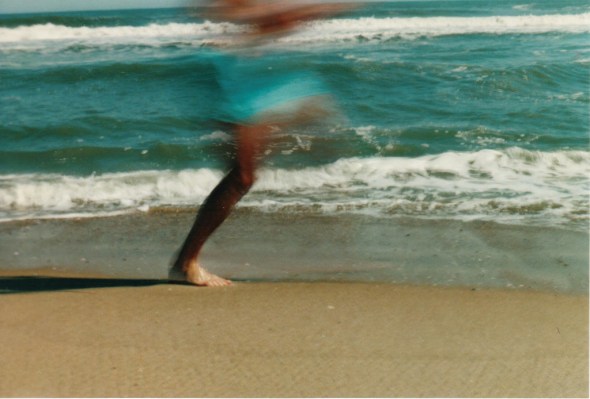The swirl of attention around products like the Apple Watch, the Moto 360 and the Fitbit is only the latest sign that wearables and health-tracking apps could be making a push into mainstream use. A new startup called Oceanleap is hoping to capitalise on that, with the launch of a cloud-based platform for developers to build and host health and fitness apps for the rush of smart watches, smart wristbands, and activity sensors that are hitting the market.
Think of Oceanleap as the wearables and activity sensor equivalent of an app development platform for mobile apps, along the lines of Parse (now part of Facebook), Appcelerator’s Titanium or Xamarin. Just as mobile developers need an efficient way to develop and then distribute apps that will work across a range of devices, the idea here is that the same will apply to developers of apps for wearables and sensor-based trackers.
And given how fragmented the market for activity tracking and wearable hardware is today, the kind of platform that Oceanleap is offering could be potentially even more useful.
“If you look at sporting and fashion, there will be thousands of companies and devices that will flood the market soon,” says co-founder Puneet Gupta, a former general manager at Amazon Web Services who left in October 2013 to start work on Oceanleap, which had been originally conceived as a platform for all Internet-of-things devices before narrowing down its focus to just a single fragmented market.
“Take out the very largest of these companies — say Google, Microsoft and Apple — and everyone else is a potential customer. Many companies will be competing for a place on the human body,” he says.
Getting in at the ground level of that concept, Oceanleap is targeting not only developers but hardware makers, which it is courting to open up their SDKs to work more closely with its own platform.
“We’re providing a platform to build user experience because what we have found is that the companies that are building devices tend to have the hardware expertise, but less so in bringing software together with that hardware. And even if they could build the SDKs themselves they would rather not.”
Oceanleap is built around a REST API, and virtually anything, written in any programming language, which can be constructed around an HTTP request, can be incorporated. This includes JavaScript, data that works across both websites and mobile apps and data for analytics tracking.
The Oceanleap platform also lets developers incorporate features that utilise a device’s sensor framework. Developers can also include features to monitor activity types, run leaderboards, add in gamification elements, and generate notifications, with further specifications, such as APIs to sync with Apple’s Healthkit, still being added to the several pre-built functions and code on there already.
Indeed, while an API framework like Healthkit, which will let third-party apps feed data into Apple’s own Heath app, could see a more concerted focus from consumers on adopting more of these devices and using the services more regularly, Oceanleap’s aim is to help facilitate that plus the creation of the very apps themselves, which Gupta sees as very distinct from building other kinds of mobile apps.
“We feel device and app makers are going to want to build holistic and ever expanding and rich experiences [for wearables],” he says. “Healthkit is not a cloud platform for wearables (let alone Health). We view it as complementary. We will provide integration into and out of Healthkit. But the market needs a full featured platform for wearables in health, fitness, fashion, and sporting.”
Indeed, this seems to be motivation for early customers of Oceanleap. “At Snypr, our mission is to make individual sports practice more fun, social and virtually competitive,” notes Doug Appleton, CEO of Snypr, an Innovation Endeavors-backed startup that is building wearable sensors for different sports, starting with Lacrosse. “Wearable technology is core to this experience, and Oceanleap’s cloud platform is designed to support a sensor-driven big data cloud environment, and they have the vision and flexibility to meet the ever improving sophistication of the use of wearables. Oceanleap became the obvious choice for us.”
Oceanleap is built on top of AWS — “partly because of my own heritage but also because AWS provides the underlying infrastructure we needed”, says Gupta. The AWS influence is also reflected in how Oceanleap is priced, with monthly charges based on API requests per second, with storage, transfer and push notifications also charged by volume.
Ultimately, Oceanleap is a long-term play — much like the wearables space itself.
Although mobile giants like Samsung and Apple, and specialist hardware makers like Jawbone and Pebble, are all crowding into the market, actual usage is fairly niche today. Analysys Mason estimates that there will be less than 1 million smart watches sold by the end of 2014.
Even the quick ramp up to the 13.6 million watches that will be sold in 2015 (per the analyst forecast) is tiny, when you consider that smartphone shipments are around 1 billion devices annually at the moment. The bigger picture for wearables is however more encouraging and speaks to the opportunity that Oceanleap is tapping: in the next seven years, there will be 758 million devices sold.
Image: Flickr
